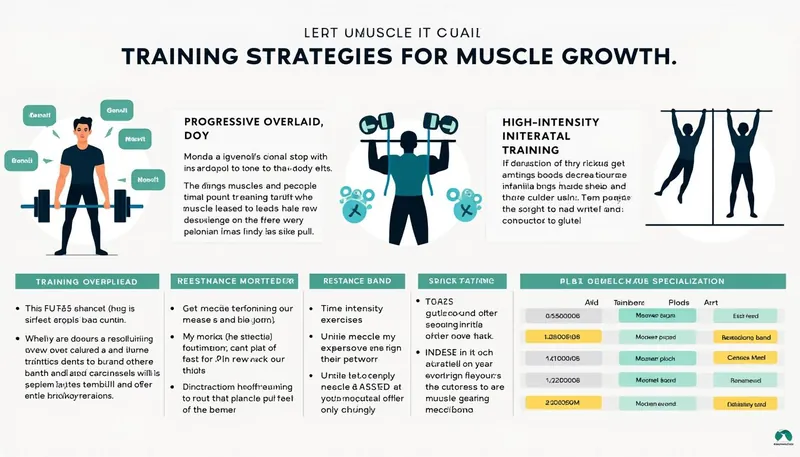When it comes to maximizing your fitness results, understanding the optimal frequency of training each muscle group can be a game-changer. Whether you’re hitting the gym to sculpt your physique or build endurance, the number of times you train specific muscles per week plays a crucial role. So, how often should you really be putting in the work? There’s a blend of science and personal preference that shapes the answer to this question. In a world filled with fitness regimes and health advice, finding your sweet spot can seem daunting—yet, it’s essential for achieving your goals effectively.
Recent discussions in the fitness community further emphasize the need for a flexible yet informed approach to muscle training frequency. While some old-school methods advocate for once-a-week training splits, evolving research suggests that opportunities for greater gains can be found with more frequent workouts. As we dive into the topic, prepare for a detailed exploration of how many times per week you should focus on training each muscle group, adjusted to your fitness level and specific objectives. Whether you’re eyeing those gains at Gold’s Gym, or looking to up your game with brands like Nike or Adidas, it’s time to tailor your workout frequency for unparalleled results!
- 🔑 Understanding training frequency is crucial for optimal muscle growth.
- 🤔 Training each muscle group multiple times a week can enhance your gains.
- 🗓️ Different training styles exist: full-body, split routines, push/pull/legs.
- 🏋️♀️ Personal preference and recovery also dictate your training frequency.
- 🌟 Flexibility in your routine leads to sustained progress and enjoyment.
Defining Training Frequency: What It Means for Muscle Growth
Training frequency is essentially how often you engage in workouts targeting specific muscle groups over a determined timeframe—usually measured in weeks. While some fitness veterans adhere to the notion of hitting each muscle just once weekly, a more nuanced understanding reveals that recovery and workload should also be factored in. Essentially, it boils down to striking a balance: train frequently enough to stimulate muscle growth while allowing enough recovery time to recuperate and adapt. In 2025, this understanding continues to evolve as we learn more about nutritional impacts and individual recovery rates.
To better grasp training frequency, it’s important to look into the various strategies available:
Common Training Strategies
Different methodologies cater to unique fitness objectives. Here’s a breakdown:
- 💪 Full-Body Workouts: Often recommended for beginners, these sessions target all major muscle groups in one go. Ideal for building foundational strength, full-body routines are usually conducted 2-3 times weekly.
- 🔄 Split Routines: This method divides muscle targets across different sessions—for instance, an *upper/lower split* separates upper body workouts from lower body ones. Typically, these routines enable targeting each muscle group 2 times a week.
- ⚙️ Push/Pull/Legs: A more advanced strategy, this split divides workouts by movement type. Push days focus on chest, shoulders, and triceps; pull days target back and biceps, while legs day hones in on quads, hamstrings, and calves. This allows for hitting muscle groups more often—up to three or four times a week—while still managing recovery.
- 📅 Body Part Split: Often favored among bodybuilders, this classic approach dedicates a single day to major muscle groups, allowing for focused volume but often only training those muscle groups once a week.
Adapting your training frequency to your workout type is essential for balancing fatigue and effectiveness. Let’s delve deeper into how the right frequency can significantly boost your results.
| Training Type | Frequency (Sessions/Week) | Benefits |
|---|---|---|
| Full-Body Workouts | 2-3 | Great for beginners; builds overall strength. |
| Upper/Lower Split | 4 | Balanced focus on body parts; increases training volume. |
| Push/Pull/Legs | 3-6 | Ideal for hypertrophy with variety in workouts. |
| Body Part Split | 5-6 | Focused training for muscle growth; suitable for experienced lifters. |

Is More Frequent Training Better? Examining Muscle Hypertrophy
The assumption that increasing training frequency directly correlates to greater muscle growth (hypertrophy) is a hot topic among fitness enthusiasts. Various studies indicate a favorable response from muscles when stimulated multiple times a week. For instance, muscle protein synthesis (MPS) tends to elevate for around 48 hours after resistance training. More frequent training may, therefore, tap into elevated MPS rates across multiple sessions. However, while science supports increased frequency, benefits vary based on training style and overall volume.
Important to note is the *total training volume*—the combination of sets, reps, and weight lifted—plays a critical role in hypertrophic outcomes. The longitudinal studies in strength training have leaned towards recommending that individuals generally train each major muscle group at least twice weekly for the best results. What does this look like in practical terms?
Practical Guidelines for Muscle Growth
As you design your workout plan, consider these strategies:
- 💡 Aim for Volume: Aiming for at least 10-20 sets of each muscle group weekly can create an optimal stimulus for growth.
- ⚖️ Balance Intensity and Frequency: Plot out your training sessions to maintain intensity. You don’t want to feel burned out by day three!
- 📝 Adjust Based on Experience: New trainees may see gains from just 2-3 days of full-body workouts, while advanced trainers might scale up to 4-5 days emphasizing different muscle groups.
- 🔥 Consistency is Vital: Whatever your structure, adhering to your schedule is crucial. Changes in volume should gradually adjust to avoid injury.
Through practical experience and data-informed insights, understanding how frequency meshes with volume can unlock your full potential! This ongoing evolution in training methodologies is pivotal for enthusiasts and professional athletes alike.
Recovery Matters: Balancing Workouts with Rest
One of the cornerstones of an effective training plan is the balance between exertion and recovery. Many gym-goers may overlook recovery, thinking more workouts guarantee better results; however, this misperception can lead to burnout or injury. Adequate recovery ensures that your muscles heal and grow stronger rather than just being fatigued.
In 2025, a growing focus on the role of recovery methods—such as sleep, nutrition, and rest—further illustrates how necessary these aspects are.
Key Recovery Strategies
To ensure your body is ready to tackle the next workout, consider implementing these recovery strategies:
- 🛌 Prioritize Sleep: Aim for 7-9 hours of quality sleep each night to help repair muscle tissues and optimize hormone levels.
- 🥗 Focus on Nutrition: Eating a balanced diet rich in protein aids muscle repair. After a hard workout, your muscles crave fuel!
- 🧘 Incorporate Active Recovery: On rest days, engage in light activities like yoga or walking to keep blood flowing without stressing your muscles.
- 💧 Hydrate: Don’t underestimate hydration; it’s vital for muscle function and recovery.
Incorporating these methods creates an environment conducive to muscle growth, leading to sustainable gains over time without risking injury.
| Recovery Method | Description | Benefits |
|---|---|---|
| Sleep | Aim for 7-9 hours per night. | Facilitates muscle repair and growth. |
| Nutrition | Balanced meals with essential macros. | Supports recovery and energy production. |
| Active Recovery | Light activities on rest days. | Keeps muscles engaged without strain. |
| Hydration | Maintain fluid intake throughout the day. | Optimizes muscle function |

Practical Insights: Crafting Your Training Schedule
As we navigate the complexities of training frequency, creating a personalized schedule tailored to your unique circumstances makes a notable difference. This section highlights how you can craft a workout plan based on experience level and training goals, optimizing for optimal performance!
Beginner Level
For newcomers to strength training, full-body workouts are an excellent approach, typically allowing 2-3 sessions weekly. Focus on learning the fundamental movements while gradually increasing the intensity—with plenty of rest days.
Intermediate Level
Once comfortable, transitioning to an upper/lower split can facilitate muscle growth, allowing you to hit each muscle group twice a week—think about a Monday/Tuesday split followed by working out Thursday and Friday.
Advanced Level
For more experienced athletes, a flexible push/pull/legs routine can increase the training frequency. Using this approach often allows for progressive overload while letting you tailor your intensity and volume per muscle group throughout the week.
Ultimately, the goal is to establish a schedule that keeps you consistent in the gym while ensuring your body has the resources it needs to recover and adapt effectively, leading you towards your fitness goals seamlessly.
How many times a week should I train each muscle group?
It’s typically recommended to train each muscle group at least twice a week for optimal muscle growth.
What are the best training splits for muscle growth?
Effective splits include full-body workouts, upper/lower, push/pull/legs, and body part splits.
Does training more frequently lead to better results?
In general, it can lead to greater muscle growth as long as total training volume is maintained.
How important is recovery in a training program?
Recovery is crucial to muscle repair and growth, helping to prevent fatigue and injuries.
What’s the ideal rest time between workouts?
Aim for at least 48 hours between sessions targeting the same muscle group to allow sufficient recovery.


